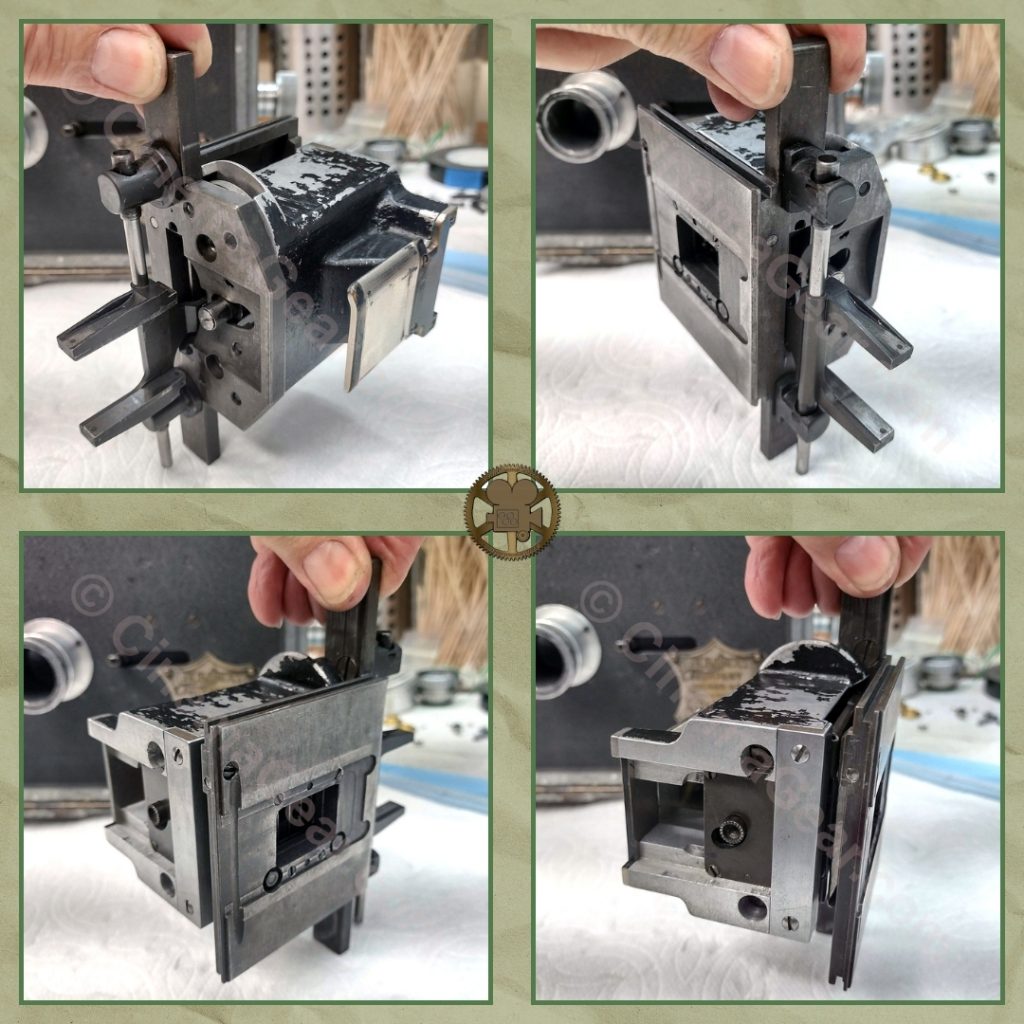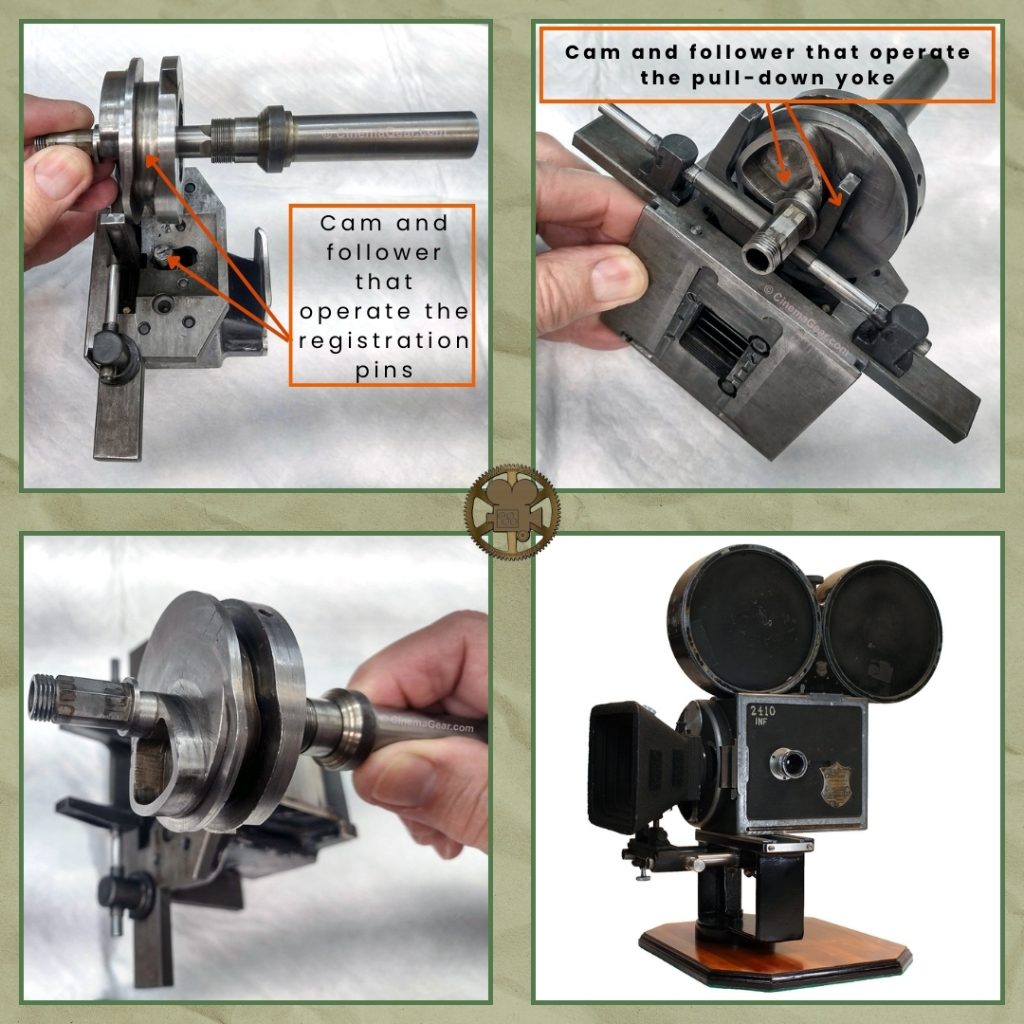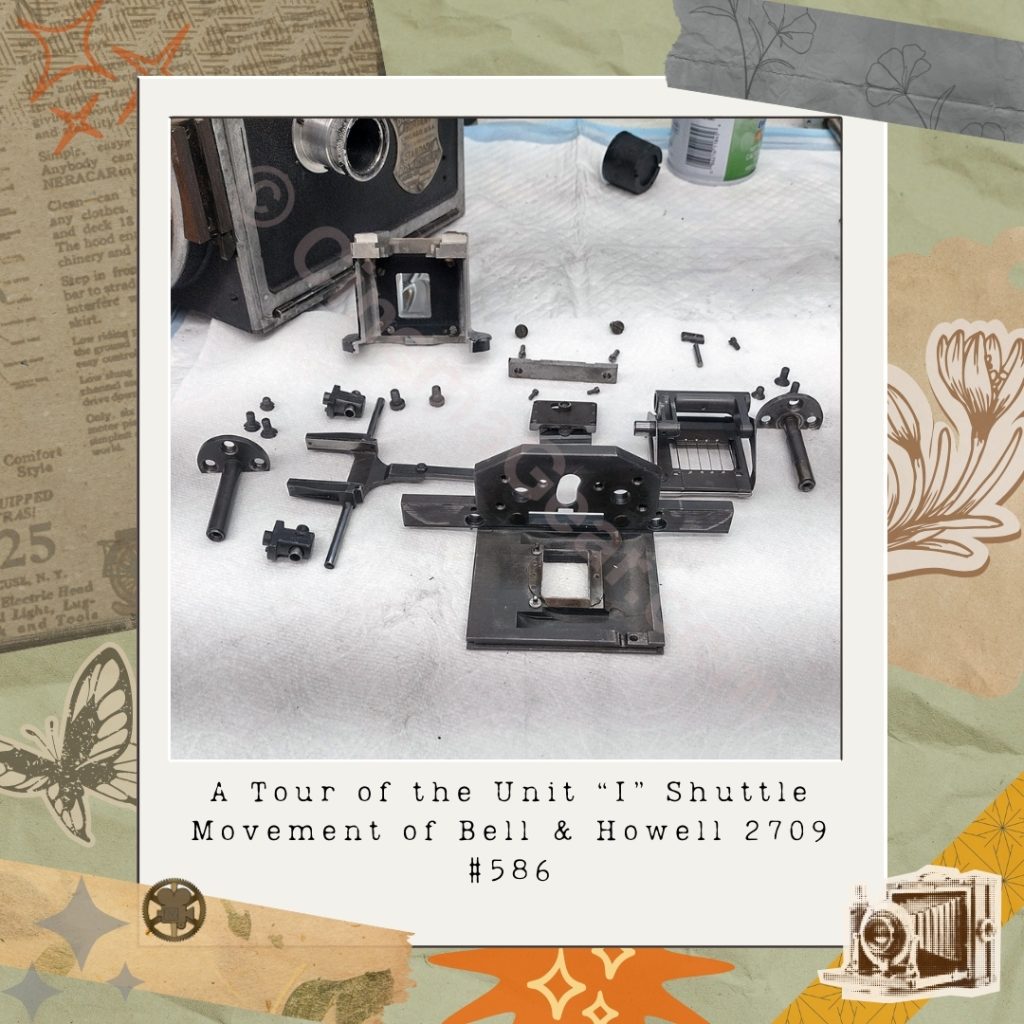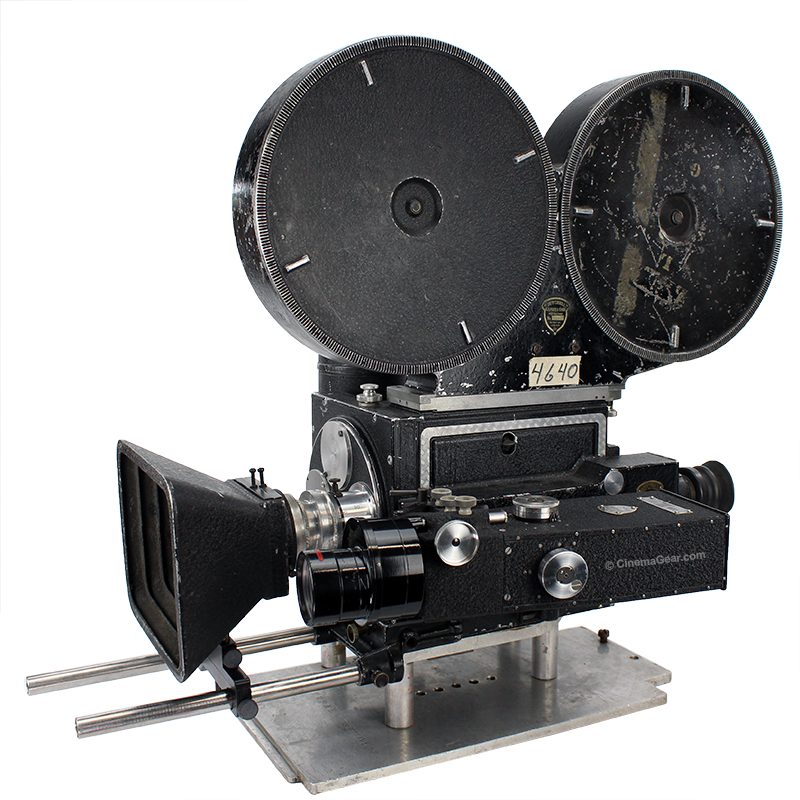The heart of any camera is the film transport, the part that actually moves the film from frame to frame and holds the film steady while an exposure is made. The Unit “I” Shuttle movement is renowned for the exceptionally steady and repeatable images it makes possible. The genius of the Unit “I” Shuttle is that it holds the film in place between two highly polished plates. These plates act to push the film onto the registration pins during exposure, then pull the film off the registration pins, engage the film with the pull-down yoke, then the pull-down yoke moves the film to the next frame position, and the plates push the film onto the registration pins so the whole cycle can be repeated. All of this motion is made possible by a set of two cams and two followers. One cam is a conventional heart-shaped cam that rides in a fork on the unit “i” shuttle that moves the pull-down claw through its up and down cycle. The other cam is a disc with an offset slot machined into the outer edge of it. This slot acts like a track that a follower pin on the unit “i” shuttle rides in. The combination of this track and follower pin move the plates so they move the film on and off the registration pins. All of this mind-numbing explanation is just to say I disassembled the movement, cleaned and lubricated it, and put it all back together. It works great now! And the camera is very happy. Silliness aside, I hope I outlined the extraordinary engineering that went into this simple mechanism that helped power generations of moviemaking and innovative cinematography techniques. Once the 2709 was supplanted by cameras like the Mitchell and its successors, it remained an important part of the title, optical, and visual effects industries.




